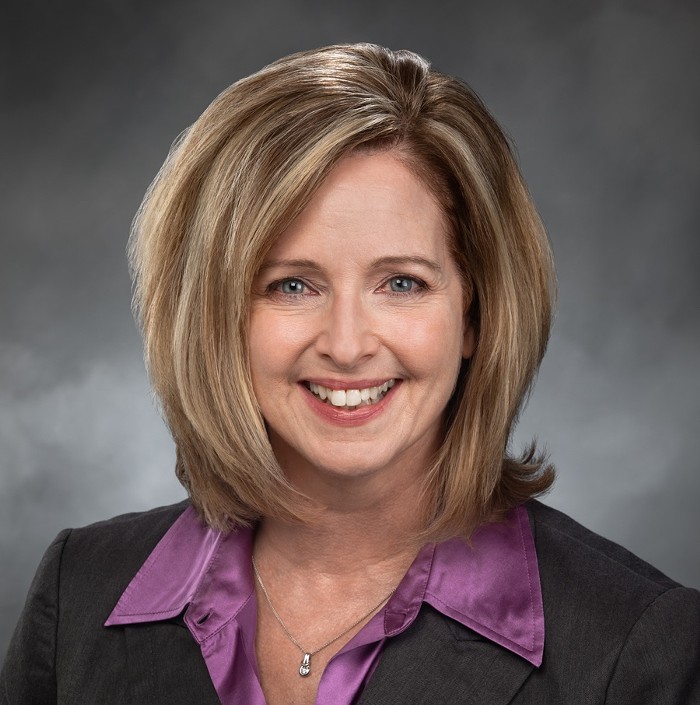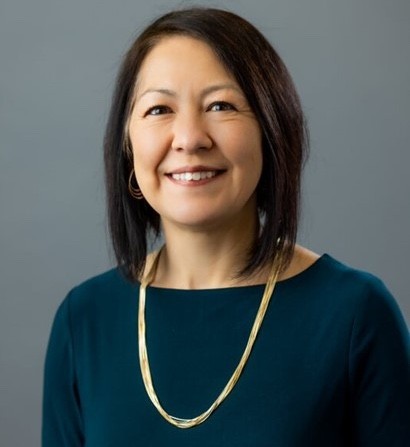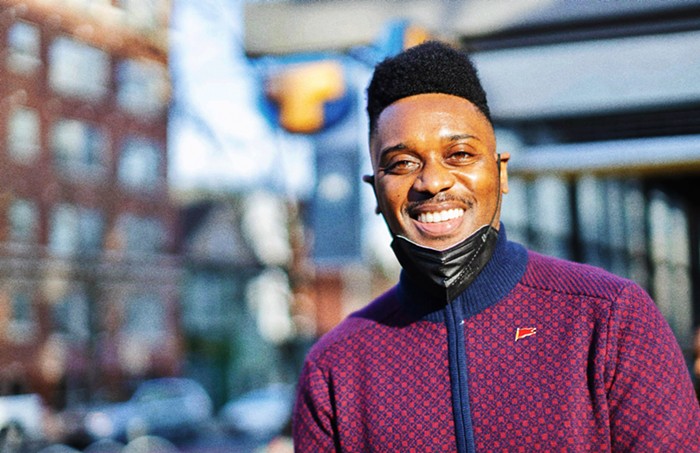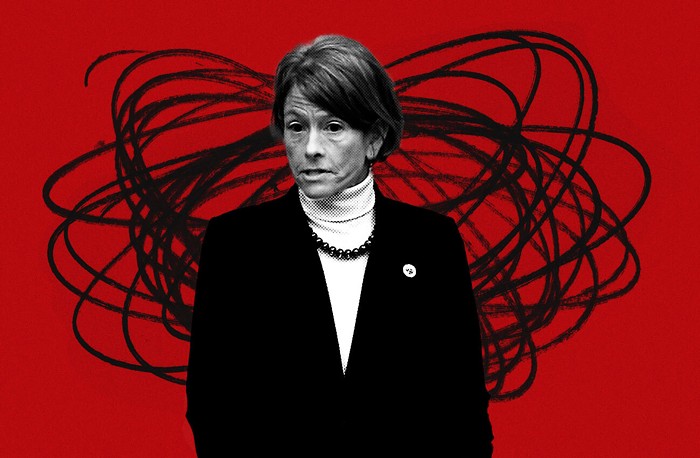
Look, all any of us want is to be able to go to work, school, vacation, or the sex club with a minimum of fuss, and with the least possible contribution to the climate apocalypse. Is that too much to ask?
Whether you’re a jet-setter or a shut-in who prefers the company of the dust mites in your bed, the state’s transportation infrastructure impacts your life every single day. And when it comes to smoothing your commute, getting deliveries from place to place, and protecting the environment, one of the most important figures in Washington is Senator Marko Liias of Edmonds, head of the Senate Transportation Committee. In that role, he’s responsible for guiding legislation and shepherding billions of dollars in transportation funding that covers everything from the sidewalk outside your home to the poisonous gasses that spill out of I-5 every hour of the day to a high-speed rail network that doesn’t even exist yet.
Though he’s been in the Legislature since 2008, last month Liias completed his first legislative session at the Senate Transpo Committee’s helm. So … how’d he do?
Major Wins & Losses
When we interviewed him at the start of the legislative session, Liias outlined two major priorities: figure out a plan for spending incoming federal money, and improve transportation safety.
He also expressed support for bolstering Washington’s supply of “missing middle” housing — that is, dwellings sized between suburban single-family houses and dense high-rises — though that wasn’t his primary focus. (For more about how the Association of Washington Cities tanked housing reform this session, check out our hit piece from last month.)
But those top two priorities have actually worked out pretty well. Not perfect; could be worse. The major achievement of the session was the passage of a spending package that sets aside a bunch of money for more accessible transportation and safer streets. It’s still not enough money, but it’s more than we had in the past. It’s a start.
Among the projects you’re likely to see advancing in the next year or two:
- Building high-speed rail
- Creating more safe routes to schools
- Improving access for people with disabilities
But there are some disappointments as well:
- An export fuel tax failed; the policy was essentially one way of getting fossil-fuel users to pay for cleaning up the mess they make (while also avoiding a politically dicey gas tax hike)
- We’re still spending big on highway expansion, which really means traffic-jam-expansion and pollution-expansion
- Light rail build-outs are still moving at a glacial pace
- An attempt to reform Washington’s lenient drunk driving laws died in committee, not unlike the hundreds of Washington residents who die every year due to impaired driving
And then there’s a handful of projects that could be good or could be bad, depending on how they proceed in the future:
- Planning for the future of I-5 has only just begun
- The Interstate Bridge Replacement project, connecting Washington to Portland, has languished for years, leaving everyone dissatisfied
“A Game-Changer”

Overall, “I think we’ve made some progress,” says Paulo Nunes-Ueno of Front & Centered, a coalition of groups focused on environmental protection and social justice. The big accomplishment of the session was passing Move Ahead Washington, a $17 billion (billion!) funding package with projects spanning the next 16 years. Move Ahead Washington is funded through fees paid by the state’s filthiest polluters, such as oil refineries (industrial petroleum use is responsible for 7.8% of Washington’s greenhouse gas emissions) and people who own cars (responsible for 22.1% of the state’s emissions), and it places more emphasis on sustainable transportation projects than past transpo packages.
“I think Move Ahead Washington is a game-changer,” Liias said in a wide-ranging interview with The Stranger at Overcast Coffee, a local cafe that shares space with a bike shop. “We’ve broken the mold of the past, which is loading it up with highway projects to get votes.”
There’s lots to examine in the package, but there was one element that Liias seemed most proud of: Starting later this year, all transit will be free, statewide, for everyone 18 and under.
“Can we just stop and be like, ‘this is a really big fucking change’?” he said.
Yes! It is a really big fucking change! (Though I wouldn’t describe it in those exact words to the kids.) Getting youngsters onto transit at an early age will hopefully turn them into lifelong appreciators of transit, and keep them away from dirty habits like driving.
Hold on, though: “Free transit is not a panacea until we have a system that serves people,” says Andrew Kidde of the 350 Washington Network, a coalition of climate justice groups. “In general, free ridership has not been shown to increase ridership unless they’re really good systems.” Even in countries that are more developed than the US, free transit hasn’t had a huge impact on driving habits.
But Liias is playing a long game here — hopefully, by hooking riders before they reach driving age, free transit will teach the next generation of Washingtonians that they don’t need to be trapped by traffic.
And that’s just one piece of a very large, very expensive pie. Washington is going to have lots of money to spend over the next five years thanks to President Joe Biden’s signature on the Infrastructure and Jobs Act, but unfortunately the overwhelming majority of that money coming into the state — $4.7 billion of it — will go to highway projects. Around $1.8 billion will go to public transportation. (To be fair, the highway projects may — may — include some public transit components.)
The Infamous Crash Comment
Liias raised some Twitter-eyebrows after our previous interview when he repeated the claim that driver behavior causes 95% of traffic crashes. This is a thorny statistic because it ignores everything that leads up to crashes, like streets designed with blind spots around parking spaces or ones that make it easy to speed. It’s like saying that weak hearts and lungs cause most smoker deaths while ignoring the role that cigarettes played in weakening them.
Sometimes, transportation leaders can lean a little too heavily on that figure, since it’s easier to dump cash into “education” programs instead of sticking your neck out to advocate for systemic safety changes, like replacing parking spaces with sidewalks and implementing safer speed limits.
Following that interview, a few days of consternation, and a meeting with Jennifer Homendy at the National Traffic Safety Board, Liias would like to clarify that of course driver behavior is just one piece of the safety puzzle and not the only piece. He points out that Move Ahead Washington requires all streetscape projects over a half-million dollars to accommodate non-drivers.
“A lot of people heard that line [about driver behavior] to mean we don’t need to do anything to our infrastructure,” Liias said, “which I didn’t say and I don’t agree with.” But that doesn’t mean we’re about to get a total overhaul of every street in the state.
“Will we get protected bike lanes on every bike corridor in the next two years, ten years, twenty years?” he asked rhetorically, not stopping to answer his own question; but the probable answer is no, not on every bike corridor. Besides, it’s not Liias's job to design every single street in the state. But putting a complete-street requirement in Move Ahead Washington is a huge shift — provided local transportation departments interpret it the way it’s intended.
Fixing Traffic Trenches

One of the most visible improvements to come out of this year’s transportation advocacy was an injection of cash to improve the state’s dreadful traffic sewer, SR 99. The road runs ruinously through Wallingford down to Westlake, then burrows under the city, emerges in SODO, and then continues down to South Park and into Tukwila.
Wallingford advocates scored a major victory with a pledge from outgoing Senator Reuven Carlyle to upgrade the sidewalk-less, speeding-prone, human-repellent design on Aurora. And, thanks to some particularly dedicated advocacy, South Park will begin the slow, steady process of contemplating a more human-scale replacement for SR 99.
“We need stuff that is taller and denser with street-level retail and office space,” Liias says of the Aurora corridor, “where residents that live above it open their doors to corridors where you can walk down the street and have seven different cafes to choose from, and you can walk on grass.”
His vision for the street, informed by conversations with the people who live and work there: “Just the bare essentials of travel lanes to move freight and goods and people, and then lots of space for bikes, pedestrians, sidewalk cafes.”
South Park’s reforms aren’t as far along as Aurora’s, but still, “I think the Reconnect South Park folks have advanced a really beautiful vision,” Liias says. “I think there’s a way to achieve the community vision of eliminating part of 99 and turning it back to the community, but I think we need to have that conversation with the Port, with businesses in the community, a broader group of stakeholders.”
That sounds dangerously like Seattle’s famous paralysis-by-committee process, whereby nothing ever gets better because we’re stuck in an infinite loop of consultations. We’ll need to keep a close eye on that one to make sure someone has the authority to say, “Okay, enough conversations, time to make some decisions.”
Planning the Future of I-5

A deadly scar cuts through the center of Seattle, wrecking numerous neighborhoods with air and noise pollution, jeopardizing everyone’s safety, and wasting space that could provide thousands of homes.
“What we did this year is get started on assessing the state of I-5,” says Liias. In past years, suburban Democrats such as House Transportation Chair Jake Fey (Tacoma) prohibited the state from planning any major I-5 projects in Everett, Seattle, Tacoma, and Olympia. Their reason for doing so was dumb: They were mad that the state Department of Transportation applied for a federal grant to study that corridor after legislators told them not to.
Move Ahead Washington removes that prohibition at last, allowing Washington’s biggest cities to finally start looking for a way out of the freeway debacle our grandparents built for us in the 1960s.
“Ultimately, we need a vision for what to do with this structure,” Liias says. “Are we going to be able to keep it? … My gut tells me we’re not going to be able to keep it in its exact form.”
But nobody knows what shape I-5 will take. For now, we’re starting with a basic $40 million seismic analysis, he says.
That means that for now, further study into putting a lid on the freeway is paused. But lidding advocates aren’t too upset about that: “We were hoping for them to fund a downtown traffic study to look at the I-5 ramps, geotechnical analysis, public engagement, more cost estimates, etc.,” wrote Scott Bonjukian of Lid I-5. But it makes sense for that to wait until the assessment is done, so we know exactly what we’re working with. In the meantime, Bonjukian wrote, “our understanding is WSDOT will begin to set a work plan this summer, with public input opportunities at some point after that.” There’s also a possibility that Seattle could tap into a new federal fund for freeway lidding.
Highway Expansion
Building wider roads means bigger traffic jams and dirtier emissions — the biggest disappointment in Move Ahead Washington, and a major frustration for sustainability advocates like Paulo Nunes-Ueno of Front & Centered. “The cognitive dissonance” is exasperating, he says, “when it’s the #1 cause of greenhouse gases in the state.”
Still, the overall package represents an improvement over proposals from previous years, which had far less set aside for less-polluting forms of transportation.
“There’s a lot of institutional weight behind expanding freeways,” acknowledged 350’s Kidde — but, he says, he found Liias generally receptive to arguments that pollution-emitters need to be reined in. “We have to rethink the whole system if we’re going to make up for the last fifty, seventy years of just highways.”
Shifting our spending from cars-cars-cars to something safer, cleaner, cheaper, and more convenient than sitting in traffic for hours of your life will take time, Liias says. “We’re putting a billion-and-a-half into walking-rolling infrastructure in Move Ahead,” he says. “We’re on the good side of the curve.”
The Interstate Bridge Replacement Program
We know that the bridge into Oregon needs to be replaced. It’s old, it’s unsafe, and it doesn’t have enough room for transit, bikes, and pedestrians. And we know that whatever replaces it is going to be large.
“The moment you touch it, it’s going to be a bigger bridge, because we don’t build shitty bridges that float in the mud anymore,” Liias says. “That’s not lanes and capacity, it’s seismic safety.”
That having been said, it’s entirely possible that we’ll wind up with more lanes, more traffic, more pavement, and more pollution.
“It should be patently obvious,” says Nunes-Ueno, “when we build more highway infrastructure, we’re not only building fossil fuel infrastructure, we’re locking in pollution in particular communities for decades to come.”
This project has been a source of concern for over a decade, but the good news is that the slow pace of progress has given officials time to develop more of an appreciation for the importance of switching from dirty single-occupant vehicles to public transit. Last week, planners confirmed that light rail will be incorporated into whatever replaces the current bridge.
Safety
“In this sixteen-year window we’re going to add an equivalent amount to all we’ve ever spent on safe routes,” Liias says. Move Ahead Washington sets aside $320 million for Safe Routes to Schools, quadrupling the spending in the last transpo package.
“We felt pretty good about the increases in funding for transit, active transportation, sidewalks, safe routes to school,” says Anna Zivarts, Director of the Disability Mobility Initiative Program at Disability Rights Washington.
Liias also mentioned that his conversation with the NTSB’s Homendy put some new ideas on his radar: “She shared with me that Europe has mandated technology be installed in cars that has the car slow down to the posted speed limit,” he said, and since that’s something that would have to be implemented at the federal level, he coordinated a letter to Congress asking them to investigate a similar policy here. Homendy also noted that lowering the maximum blood-alcohol level for drunk driving citations has improved safety in Utah, and Liias plans to investigate that more closely as well.
High-Speed Rail

Don’t plan your train ride to Los Angeles just yet. We’re still decades away from regional high-speed rail (HSR), and even further from connecting it to other states, but Move Ahead Washington sets aside a modest chunk of change to create a new HSR proposal over the next five years, potentially connecting Portland up to Seattle and on to Vancouver, BC.
“If everything went according to plan, it could mean that in fifteen or twenty years you could see high-speed rail opening in some element of the corridor,” says Liias. That’s ambitious, particularly considering how many times California’s HSR has gone off the rails — metaphorically speaking, of course, since they’re still years away from actually running any trains. But Liias sees Washington pursuing a very different strategy. He wants the private sector to have more of a role in planning and construction, “a model that’s worked well in Europe and Asia,” he says. “We don’t have enough experience delivering high-speed rail in the US,” he says, and he hopes we can hire a company that’s built something similar overseas to do it here.
Housing
While housing is a bit of a side-issue to transportation, Liias acknowledges that they’re related.
“It is deeply frustrating that we’re stuck in this moment where housing prices are through the roof and the Legislature on the land use side doesn’t meet that urgency,” he says, noting that he’s concerned about how sprawl can negatively impact transit service. “We’ve got a Legislature that’s 95% homeowners, so they’re not seeing that,” he says. “They’re missing out on the fact that this is a crisis.”
Major Disappointments
Not everything went smoothly this session. Front & Centered had high hopes for legislation that would have pumped the brakes on building highway infrastructure in communities with the highest environmental health disparities. That work made it as far as a draft, with help from Rep. Emily Wicks, but ultimately she didn’t feel it was ready enough for her to sign on as a sponsor.
For his part, Liias is disappointed that he wasn’t able to find a way to deliver light rail faster. We could be expanding Sound Transit to Everett and Lynnwood ahead of schedule, but instead they’ll have to wait because the money for rapid construction just isn’t there. Liias hopes that naming a new CEO at Sound Transit may generate some momentum for pursuing new funding.
And then there’s a handful of bills that the Legislature simply didn’t have time to consider, since we had a short session this year. Those include a proposal to lower the legal limit for intoxicated driving; one to create a new state agency for regulating less filthy car technology, and one to deter bridge jumping.
Those proposals may all come back next year.
Next Steps
Over the next few months, Liias said, he’ll be working on filling in some of the more nebulous details of Move Ahead Washington, firming up dates for what’s going to be built and when. For example, there’s a half-billion dollars set aside for vehicle electrification, but not much clarity yet about who gets that money.
He’ll also be working on setting up an inter-agency council to regulate so-called “clean cars” — maybe their first order of business can be finding a new name since, obviously, there’s no such thing as a clean car.
In the meantime, advocates are planning to keep a close eye on Liias’s work. Kidde of the 350 Washington Network is hoping to hear the senator talk more about “fifteen-minute cities,” a planning concept wherein everything a person needs can be reached within fifteen minutes without having to use a car. “It’s key for climate, for the physical health of people, for safety and not having people killed so often,” he says.
Zivarts with Disability Rights Washington would like to see Liias participate in their “Week Without Driving” event this September, and for that to become an official event for state and local officials. Liias has said that he’d like to participate, but his schedule (and the state’s shoddy transit system) make it impossible.
Ultimately, “the system in which he’s working is difficult,” says Nunes-Ueno of Front & Centered, “But I think we’ve made some progress. At least the statewide projects have complete streets going forward, so you can’t build roads that don’t have an accommodation for walking and biking. But I don’t know that there’s enough dollars to go back and retrofit the ones that are missing today.”
Liias knows that everyone is impatient to fix the streets, speed up the trains, and get where they’re going as quickly and comfortably and cleanly as possible. “We’re changing direction … and if we can continue this vision we’ll change how people move about the state,” he says, while also tempering expectations with an acknowledgement that more challenges lie ahead.
“Something will blow up or collapse,” he says. “In transportation, there’s always something unexpected.”



















